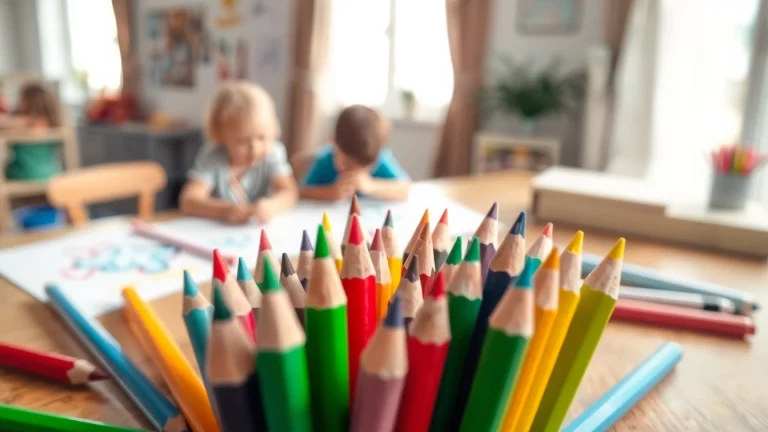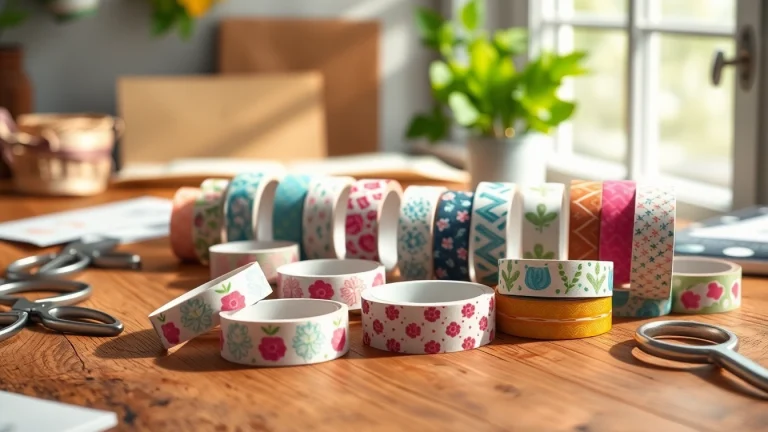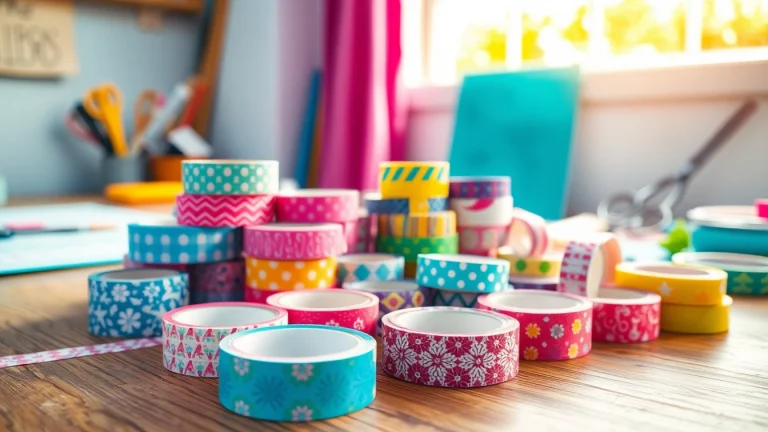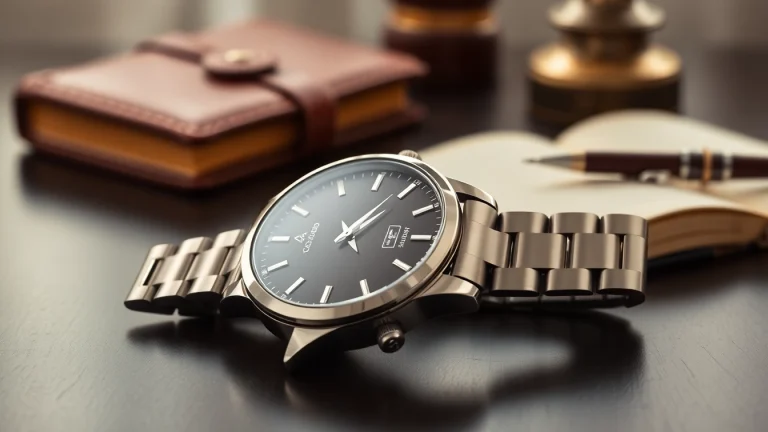
A Guide to Choosing the Best Kids Colouring Pencils for Creative Learning
Understanding Different Types of Kids Colouring Pencils
When it comes to kids colouring pencils, not all are created equal. The variety of types available can be overwhelming, but understanding the distinctions between them can help you make the right choice for your child’s creative escapades. Whether they are a budding Picasso or just starting out, the type of pencil can greatly affect their experience.
Wax vs. Oil-Based Pencils
The two primary types of colouring pencils are wax-based and oil-based, each offering unique characteristics and benefits.
- Wax-Based Pencils: These pencils are made with a wax binder, which allows for a smooth application of colour. They are often easier to blend and layer, making them a favourite for younger artists. The downside is that they can break more easily due to their softer leads.
- Oil-Based Pencils: On the other hand, oil-based pencils are sturdier and typically have harder leads. This means they sharpen to a fine point and are less prone to breaking. However, they may not blend as easily as wax-based pencils, which can make them more challenging for young users.
Watercolour Pencils Explained
Watercolour pencils are another exciting option that combines the properties of colouring pencils and watercolour paints. When used dry, they function like regular colouring pencils, but with the addition of water, they can create beautiful, fluid illustrations. This versatility allows children to explore different techniques, making art feel more dynamic and engaging.
To use watercolour pencils, kids can first colour on their paper, and then use a wet brush to blend the colours. The results can mimic watercolour paintings, providing a wonderful opportunity for artistic expression and experimentation.
Choosing the Right Pencil for Your Child’s Needs
When selecting colouring pencils for kids, consider their age, skill level, and the type of project they are undertaking. Beginners might benefit from softer, wax-based pencils that are easy to handle and blend, while more experienced young artists could find oil-based pencils or watercolour pencils more rewarding for their creative flair. Always ensure that the chosen pencils are non-toxic and safe for children to use.
Benefits of Using Kids Colouring Pencils
The benefits of colouring with pencils extend far beyond simple entertainment. Engaging with colour and art can have profound effects on a child’s development, creativity, and emotional well-being.
Enhancing Creativity and Imagination
Colouring allows children to express their ideas visually, engaging their imagination in ways that traditional academic tasks may not. With a set of colouring pencils, the only limit is their imagination. They can create vibrant worlds, elaborate characters, and intricate designs. This self-expression nurtures creativity, which is essential not only in art but also in problem-solving and critical thinking skills.
Fine Motor Skill Development
Using colouring pencils helps develop fine motor skills necessary for writing and other tasks. Gripping the pencil, controlling pressure, and being precise with movements all contribute to improving dexterity. As children practice their colouring techniques, they build hand-eye coordination while enjoying the process of creating something beautiful.
Art Therapy and Emotional Expression
Art therapy has long been recognized as a valuable tool for emotional expression, and colouring with pencils is an accessible way for children to engage in this practice. When children sketch and fill in designs, they channel their feelings into a visible form, which can be especially helpful in processing emotions like stress, anxiety, and sadness. This therapeutic aspect makes colouring a worthwhile activity, fostering emotional intelligence and resilience.
Top Brands of Kids Colouring Pencils Reviewed
With such a diverse selection available in the market, several brands have established themselves as leaders in the kids colouring pencil segment. Understanding the options can help you find the right fit for your child.
Budget-Friendly Options
If you’re seeking affordable yet quality options, brands like Crayola and Prang provide excellent products without breaking the bank. Crayola, a household name, offers vibrant colours and durable materials, making it perfect for young beginners experimenting with art. Prang’s colouring pencils are also a solid choice, often featuring environmentally-friendly materials at reasonable prices.
High-End Choices for Serious Young Artists
For those who are serious about art, higher-end brands such as Prismacolor and Faber-Castell offer professional quality that can inspire and motivate young artists. Prismacolor’s coloured pencils are known for their smooth application and rich pigments, allowing for intricate blending. Meanwhile, Faber-Castell offers a range of quality pencils, including some with watercolour capabilities that cater to more advanced techniques.
Eco-Friendly Brands to Consider
Today’s conscious parents often seek eco-friendly products, and brands like Ticonderoga and Lyra have taken steps to reduce their environmental footprint. Ticonderoga’s pencils are made from sustainably sourced wood and come with non-toxic graphite. Lyra has developed an entire range composed of environmentally friendly materials while still delivering bright visuals and durability.
How to Care for Kids Colouring Pencils
Keeping colouring pencils in optimal condition ensures longevity and quality performance, but it requires a bit of know-how. By following some simple care guidelines, you can help maintain your child’s coloured pencils in top shape.
Sharpening Tips to Maintain Structure
Proper sharpening can prevent breakage and help maintain the integrity of your pencils. Invest in a quality sharpener designed for the type of pencils used—some sharpeners are better suited for softer wax-based pencils, while others are ideal for harder leads. Encourage your child to sharpen pencils to a fine point as needed to enhance precision and detail in their work.
Storage Solutions to Maximize Longevity
How pencils are stored greatly affects their lifespan. Keep them in sturdy pencil cases or containers to prevent bending and breaking. Consider organizing them by colour to make finding the right shade quicker and more enjoyable for your child. Regularly check and replace broken pencils, ensuring a seamless creative experience.
Cleaning Techniques for Ideal Use
Cleaning your child’s colouring area is just as essential as looking after the pencils themselves. Encourage them to clean the surfaces where they work to prevent unwanted marks and mess, and to periodically dust off the pencils to remove any accumulated debris. For pigment stains on hands or surfaces, simple soap and water usually do the trick.
Creative Projects Using Kids Colouring Pencils
Kids colouring pencils can be used for a wide array of artistic projects, encouraging kids to engage and express themselves creatively. Here are some inspiring activities to try.
Fun Colouring Activities for Home
Colouring doesn’t have to be confined to pages in a book. Create custom colouring sheets using online templates or photos uploaded from digital devices, allowing your child to personalise their projects. Colouring parties or collaborative family art nights can also boost excitement and create cherished memories.
Collaborative Art Projects with Friends
Art becomes even more enjoyable when shared with friends. Encourage your child to invite peers over for arts and crafts sessions. They can work together on large mural projects, exchanging ideas and techniques. Not only does this foster collaboration, but it also strengthens social skills. Celebrate their collective creativity by displaying the resulting artwork in a prominent area of the home.
Using Colouring Pencils for Educational Purposes
Colouring pencils can serve an educational function as well. They can be used to illustrate concepts, label diagrams, or create visual presentations of their learning material. Teachers often incorporate art into lessons to aid in memory retention and promote active engagement with the subject matter. By combining fun and education, kids are more likely to stay motivated and invested in their learning.


